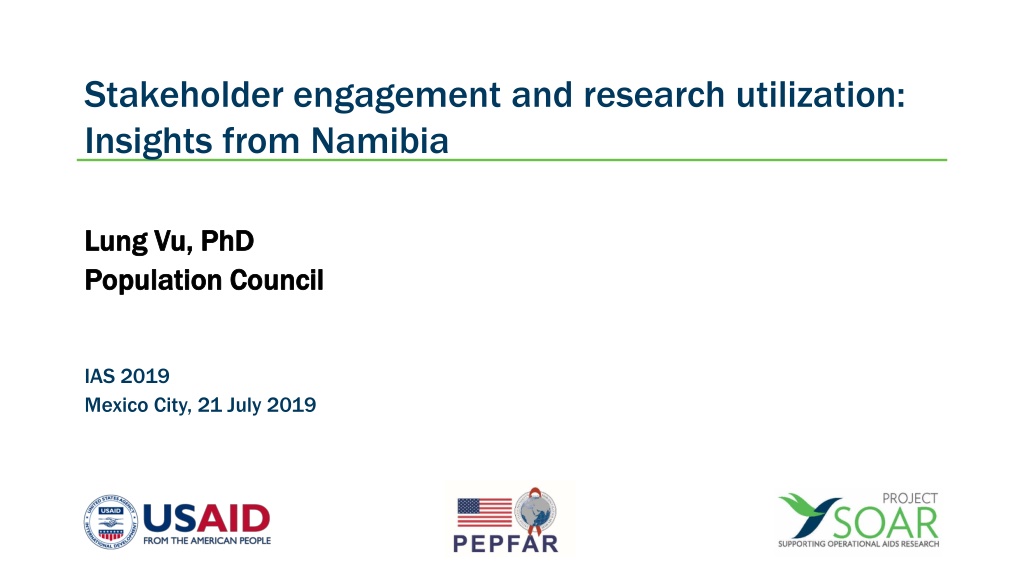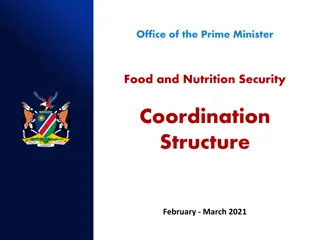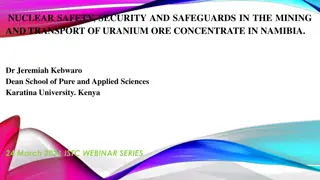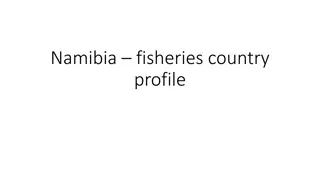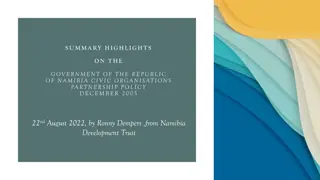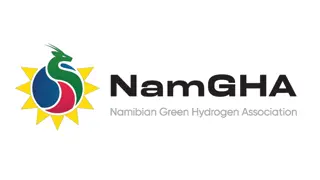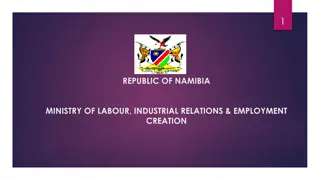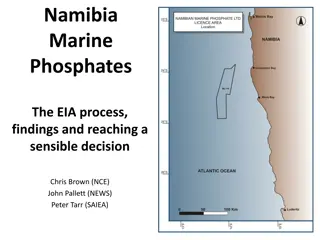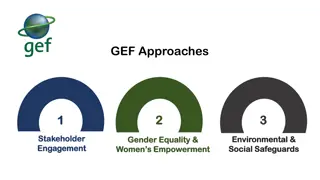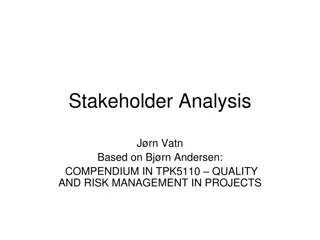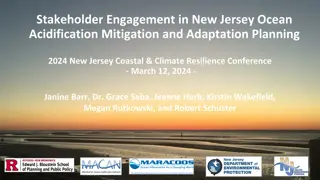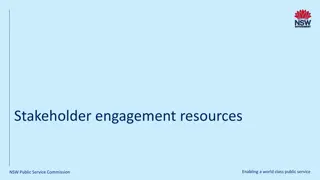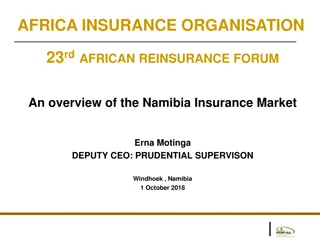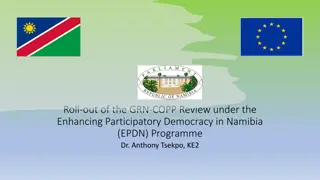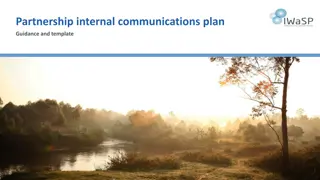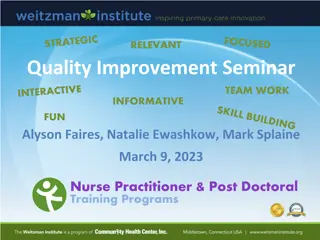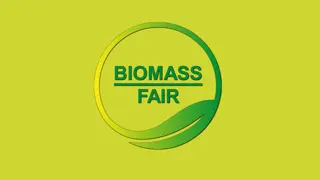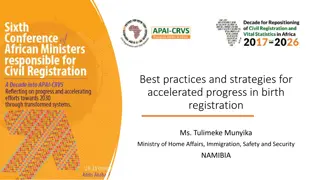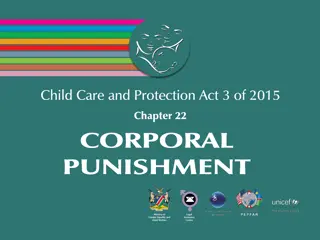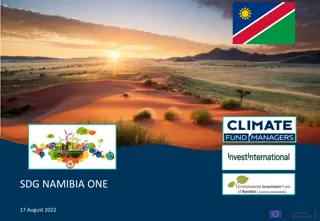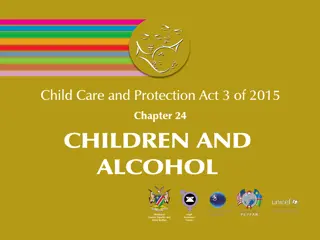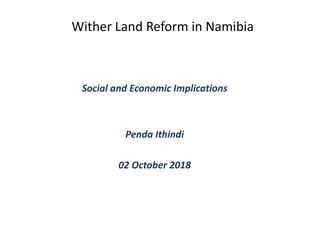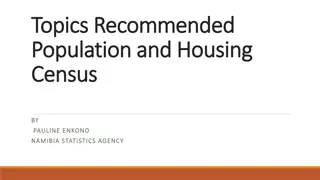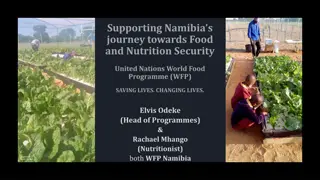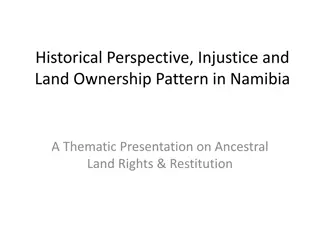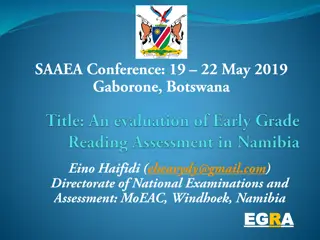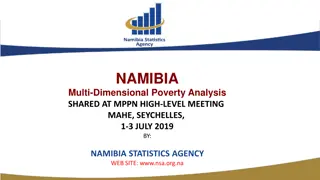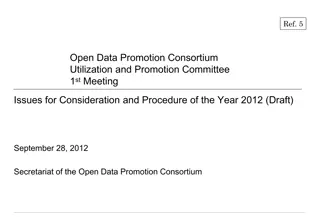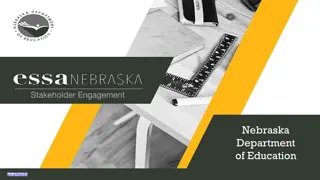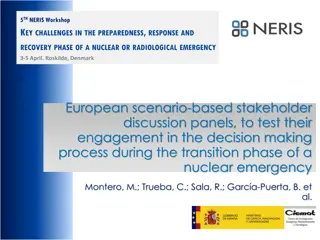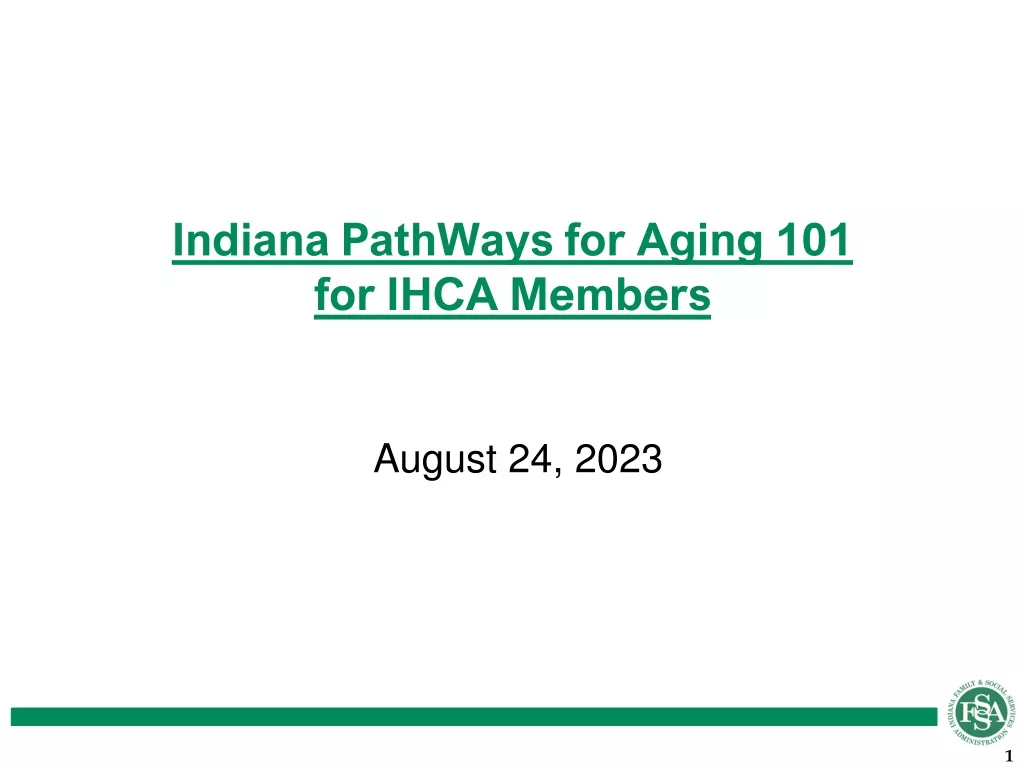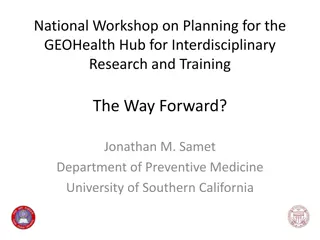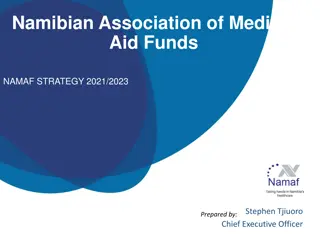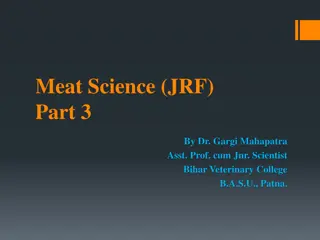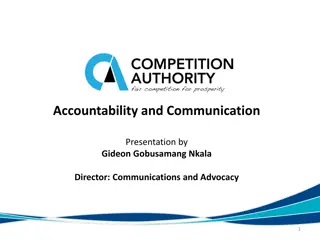Insights on Stakeholder Engagement and Research Utilization in Namibia
Namibia initiated the transition to Treat All in 2017, supported by USAID and the Ministry of Health. This study aimed to examine the impact of Treat All on HIV indicators, assess cost-effectiveness, and document implementation factors through data collection, including patient-level records, cost data, and qualitative interviews. Stakeholder engagement was integral, involving close collaboration with donors, government officials, and implementing partners to inform policy and ensure timely results.
Uploaded on Sep 26, 2024 | 0 Views
Download Presentation

Please find below an Image/Link to download the presentation.
The content on the website is provided AS IS for your information and personal use only. It may not be sold, licensed, or shared on other websites without obtaining consent from the author. Download presentation by click this link. If you encounter any issues during the download, it is possible that the publisher has removed the file from their server.
E N D
Presentation Transcript
Stakeholder engagement and research utilization: Insights from Namibia Lung Vu, PhD Lung Vu, PhD Population Council Population Council IAS 2019 Mexico City, 21 July 2019
Background Namibia began the transition to Treat All in April 2017 USAID and Namibia s Ministry of Health and Social Services (MoHSS) were keen to learn how HIV-related outcomes were affected at USAID-supported facilities Important to understand how transition to Treat All impacts progress toward 90-90-90 2
Study objectives 1. Assess effects of Treat All on key HIV indicators: ART initiation, retention in ART, viral suppression, and service quality. 2. Estimate annual ART-related cost per ART client and compare unit cost per key treatment indicator before and after implementation of Treat All. 3. Document factors that affect the implementation of Treat All. 3
Types of data Objective 1 Objective 1: Patient-level data Routine health service record data Routine health service record data: 12 months before and 12 months after Treat All Client satisfaction surveys Client satisfaction surveys Round 1: June-July 2017 (during early stages of Treat All roll-out) Round 2: June-July 2018 Objective 2 Objective 2: Cost data Treat All roll-out Cost data from 10 ART sites for the 12 months before, and 12 months after Objective 3 Objective 3: Qualitative interviews Qualitative interviews with clients and providers: Round 1: June-July 2017 (during early stages of Treat All roll-out) Round 2: February 2018 Round 3: June-July 2018 4
HOW DID WE ENGAGE IN HOW DID WE ENGAGE IN- -COUNTRY STAKEHOLDERS? STAKEHOLDERS? COUNTRY 5
Research team worked closely with stakeholders The research team worked with the donor (USAID), the government (MOHSS), District Health, and implementing partner (Intrahealth) Designed a mixed method IS study that provided timely results within a month or two of data collection District health officials, federal government, implementing partners, and donors attended the meetings Feedback fed into data analysis and report writing via data review meeting at baseline, midline and endline Policy briefs created to inform local stakeholders and USAID Namibia
Investigators and authors Co-PI from MoHSS Co-PI from the local research partner: Survey Warehouse Co-investigators from local implementing partner: IntraHealth international Co-investigator from USAID Namibia Local investigators are authors of research outputs (briefs, conference abstracts, reports, manuscripts)
Research led by local institutions Survey Warehouse staff trained to conduct qualitative and quantitative research Survey Warehouse trained on using CAPI data capture platform and costing data collection Because we used routine data, including costing data and medical records, engagement with MoHSS and IntraHealth was critical in gaining access to the data District health officials involved in every step from conceptualization to data collection and data sharing Pop Council PI provided troubleshooting and support supervision throughout the study period
HOW WERE THE FINDINGS USED TO HOW WERE THE FINDINGS USED TO INFLUENCE POLICY AND PRACTICE? INFLUENCE POLICY AND PRACTICE?
90-90-90 indicators informed COP 2018 and 2019 Study was responsive to donor funding cycle (PEPFAR COP) in that results informed COP planning Viral suppression rate corrected and used Previous electronic record system had errors and produced underestimated viral suppression rate These findings confirmed data from the Namibia National HIV Impact Assessment (MoHSS 2018) Cost data indicates cost-saving from the implementation of the treat all guidelines.
Government responded to findings on viral load testing Baseline findings showed: Poor recording of VL testing Low rate of TB screening among PLHIV Endline data collection included: Questions in qualitative interviews with providers and patients about VL testing Added clinical observations of TB screening at routine visits We found: Only 42% of clients observed asked all 5 TB screening questions Lack of communication between providers and clients about VL testing VL record not entered into client care booklets
Validated government decision to... Continue the treat all approach Produce job aids to remind health care providers about TB screening Ensure VL records to be entered Provide additional training to district health M&E team Improve provider behavior and communication to increase VL testing 12
Conclusions Feasible to use routine data to fast track 90-90-90 indicators, while strengthening local organizations to collect and use the data for rapid course correction. Engagement with the local government is critical in accessing routine and cost data and translating findings into practice. Early feedback is useful and can be integrated into ongoing research activities to further assist the government. Engaging local stakeholders paves the way for a smoother research to policy process, particularly in resource-limited settings.
Thank You RESEARCH RESOURCES Project SOAR (Cooperative Agreement AID-OAA-A-14-00060) is made possible by the generous support of the American people through the United States President s Emergency Plan for AIDS Relief (PEFPAR) and United States Agency for International Development (USAID). The contents of this presentation are the sole responsibility of Project SOAR and Population Council and do not necessarily reflect the views of PEPFAR, USAID, or the United States Government. EVENTS NEWS Through operations research, Project SOAR will determine how best to address challenges and gaps that remain in the delivery of HIV and AIDS care and support, treatment, and prevention services. Project SOAR is producing a large, multifaceted body of high-quality evidence to guide the planning and implementation of HIV and AIDS programs and policies. Led by the Population Council, Project SOAR is implemented in collaboration with Avenir Health, Elizabeth Glaser Pediatric AIDS Foundation, Johns Hopkins University, Palladium, and The University of North Carolina. Visit projsoar.org!
